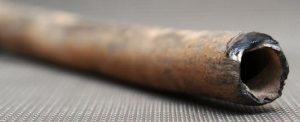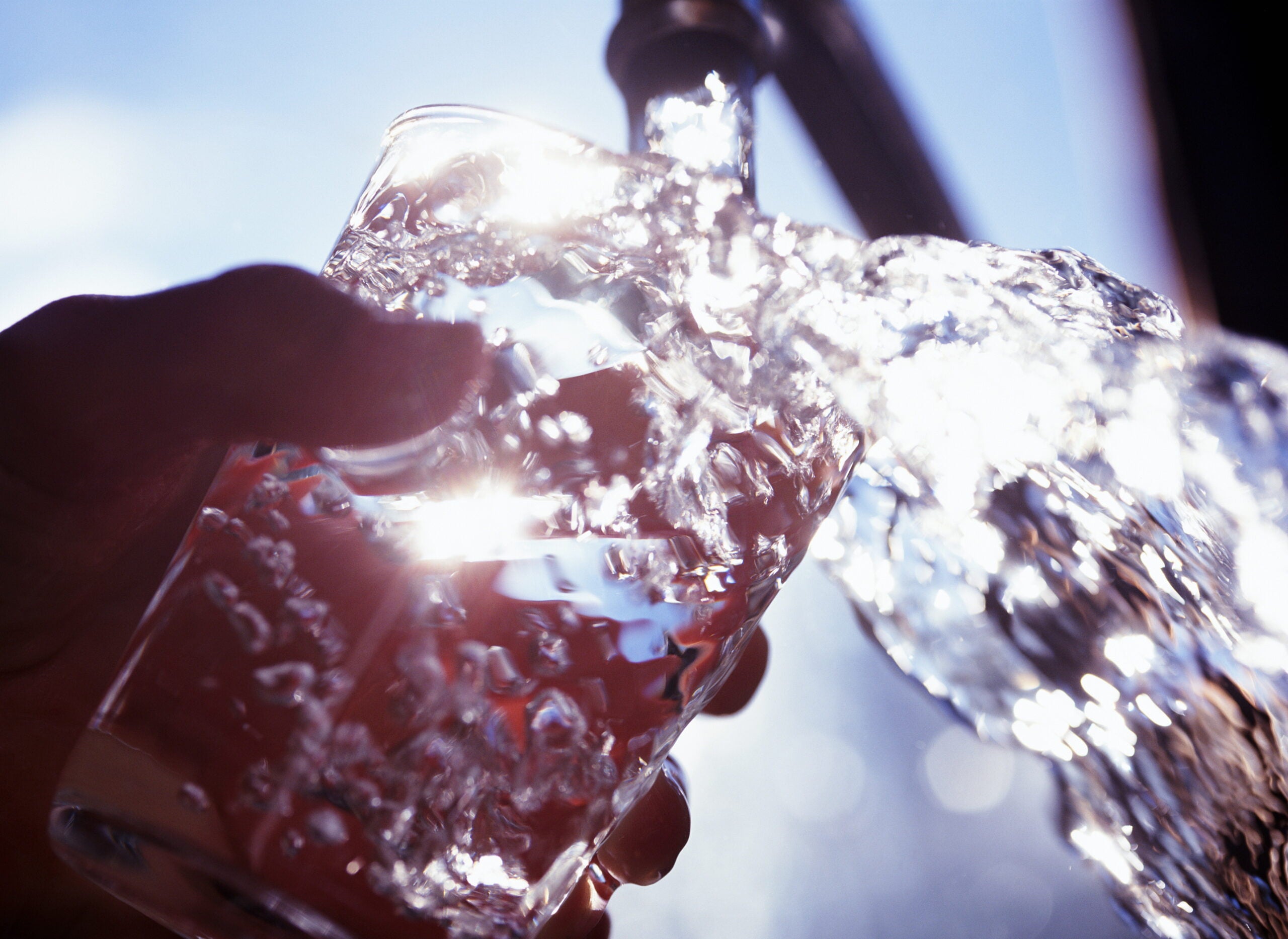
Michigan utilities report much lower percentages of service lines of lead or unknown material than Wisconsin or Illinois
Tom Neltner, J.D. is the Chemicals Policy Director
Note to readers: As we all grapple with the grave global health challenge from COVID-19, we want to acknowledge the essential service that the public health professionals at water utilities provide in delivering safe water not only for drinking but for washing our hands and our surroundings. In the meantime, we are continuing to work towards improved health and environmental protections – including reducing lead in drinking water. We’ll plan to keep sharing developments regarding lead in drinking water that may be useful to you. In the meantime, please stay safe and healthy.
Lead service line (LSL) inventories provide useful insights into the location and number of LSLs in states and the funding needed to fully replace these lines. In previous blogs, we examined mandatory reporting by utilities of service line material in Illinois and Wisconsin.[1] Here, we examined a March 2020 preliminary report by the Michigan Department of Environment, Great Lakes, and Energy (EGLE) summarizing data submitted by 1,029 utilities. Unlike the annual reporting in Illinois and Wisconsin, Michigan required utilities to submit a preliminary inventory by January 1, 2020 and requires a complete inventory before 2025. While the preliminary report allows lines to be designated as unknown, the material must be determined by 2025. This is a two-step process, rather than the annual report approach that California has taken.
Michigan reports less than 100,000 LSLs and 276,000 lines of unknown material that may be lead
The state’s preliminary report is based on 1,029 utilities[2] (74% of the state’s 1,386 total) with 2.40 million service lines (90% of the 2.66 million total).[3] This reporting rate is lower than what Illinois experienced at a similar stage in the first year of mandatory reporting.
For the 1,029 utilities that reported, utilities reported 99,000 (4% of total) lead, 21,000 (0.9%) galvanized steel,[4] 177,000 (7%) of unknown material but likely to be lead, and 276,000 (12%) as unknown with no information. If all of the four categories are actually lead (which is unlikely), there would be 573,000 (23%) LSLs in Michigan.
Table 1: Number of LSLs, galvanized and unknown service line reported by ten largest Michigan utilities at beginning of 2020
| Utility | Total | Lead | Galvanized | Unknown – Likely lead | Unknown – No information |
|---|---|---|---|---|---|
| Detroit | 311,000 | 2,420 | 1 | 77,197 | 28,922 |
| Grand Rapids | 81,248 | 18,557 | 0 | 8,540 | 0 |
| Lansing | 60,406 | 0 | 0 | 0 | 0 |
| Warren | 51,000 | 0 | 0 | 1,000 | 10,000 |
| Kalamazoo | 41,411 | 2,817 | 708 | 4,686 | 974 |
| Sterling Heights | 41,160 | 0 | 0 | 0 | 0 |
| Livonia | 38,526 | 106 | 0 | 354 | 25,060 |
| Dearborn | 34,712 | 4,489 | 0 | 8,225 | 3,024 |
| Saginaw | 34,356 | 11,342 | 127 | 7,920 | 2,794 |
| Westland | 29,355 | 0 | 197 | 0 | 17,999 |
| Total for ten largest utilities | 723,174 | 39,731 | 1,033 | 107,922 | 88,773 |
| Total reporting for State | 2,402,753 | 99,382 | 20,558 | 176,878 | 276,394 |
| Other types reported are “unknown – likely does NOT contain lead” and “contains neither lead nor galvanized previously connected to lead.” They are not included in the table for simplicity. | |||||
Of the 1,029 Michigan utilities, 882 (86%) reported having no LSLs and 742 (72%) of those reported no service lines categorized as lead, galvanized, unknown – likely lead, or no information.
Comparison of Michigan to Illinois and Wisconsin numbers
When comparing state inventories, it is important to keep in mind that each state has different categories. Additionally, while Wisconsin had about 100% compliance and Illinois had about 95% in the first year, only 75% of Michigan utilities submitted reports. However, for Wisconsin and Illinois the reporting is part of a regular reporting program.
With these cautions in mind, Michigan has much lower percentages of lead, galvanized, and unknown services compared to the total number of services than Illinois and Wisconsin. (See table below). Michigan’s is about 25% of Illinois and Wisconsin for lead and about 50% for unknowns that may be lead. If all of the remaining utilities reported all of their lines in one of the four categories, Michigan would still have 67% of what Illinois and Wisconsin have.
Table 2: Michigan has a much lower prevalence of service lines made of lead, galvanized or unknown material
| Michigan | Illinois | Wisconsin | |
|---|---|---|---|
| Total service lines | 2,402,000 | 3,711,000 | 1,053,000 |
| Lead (percent total) | 99,000 (4.1%) | 679,000 (18%) | 154,000 (15%) |
| Galvanized | 21,000 (0.9%) | 55,000 (1.5%) | 24,000 (2.4%) |
| Unknown likely contains lead | 177,000 (7.4%) | NA | NA |
| Unknown* | 276,000 (12%) | 1,051,000 (28%) | 288,000 (27%) |
| Total of four categories that may be lead* | 573,000 (24%) | 1,785,000 (48%) | 466,000 (44%) |
| AWWA’s 2016 estimate of LSLs in state | 650,000 | 730,000 | 240,000 |
| *Meaning varies by state: Michigan - “unknown – material(s) unknown” meaning service line materials are fully unknown and utility has no information regarding the likelihood of lead being present in the service line; Illinois – “unknown may contain lead”; and Wisconsin – “other metal.” Michigan reporting was for end of 2019 while Illinois and Wisconsin were for a year earlier. |
|||
For comparison, in Table 2, we provide the estimate published by the American Water Works Association (AWWA) in 2016 for the three states. While the AWWA estimates are useful when a state has no estimates, for these three, we encourage readers to rely on the state’s inventories.
Summary
Michigan’s significantly lower prevalence of LSLs and service lines of galvanized, and unknown material compared to Illinois and Wisconsin is surprising, and there are several potential reasons for this difference. It could be due to the progress made in Michigan, especially Flint and Lansing, in replacing LSLs, or that Michigan’s report is for the end of 2019 compared to the end of 2018 for Illinois and Wisconsin. A more likely reason is that Chicago’s mandate to use LSLs until 1986 influenced the region (which includes southeast Wisconsin). Nonetheless, it is good news that Michigan’s numbers were lower-than-expected, and it demonstrates the value of requiring this type of reporting, especially to states and communities to assess the need and develop means to fund the effort as Wisconsin did.
[1] The only other state with mandatory reporting was California, but it has limited value because it only covers the portion of the service line owned by the utility and excludes the portion on private property.
[2] EPA refers to them as community water systems. We use “utilities” to describe these systems.
[3] Totals are based on EPA’s Safe Drinking Water Information System (SDWIS) database.
[4] “Known Galvanized Previously Connected to Lead (GPCL).” Michigan’s Lead and Copper Rule requires water supplies to remove all GPCL along with all LSLs within 20 years.












